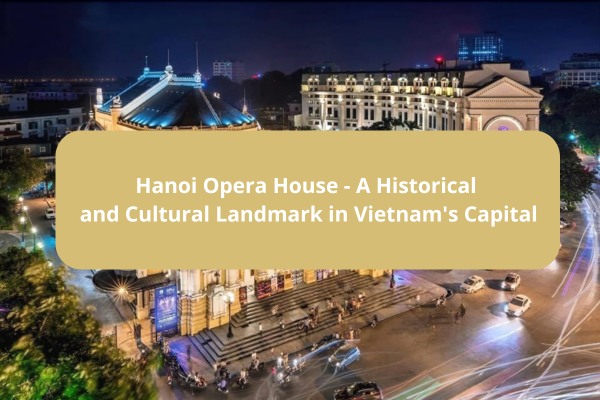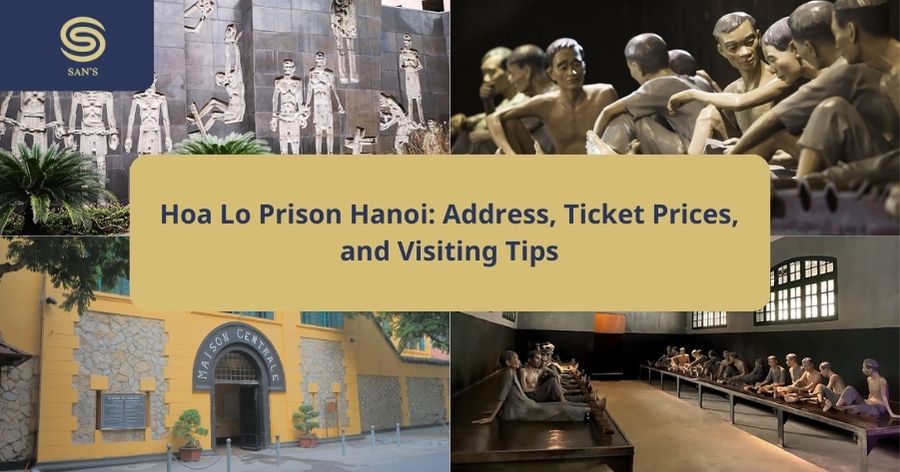Nestled in the heart of Vietnam’s capital, the Hanoi Opera House stands as a testament to the city’s rich cultural heritage and historical significance. Located at 1 Tràng Tiền, Hoàn Kiếm District, this iconic building is not just a performance venue but a symbol of French colonial influence on Vietnamese architecture.
The Hanoi Opera House was constructed between 1901 and 1911 during the French colonial period, modeled after the Palais Garnier in Paris. Its grand design and historical relevance make it a must-visit landmark for tourists and locals alike.
1. Architectural Marvel of Hanoi Opera House
The Hanoi Opera House is a stunning example of French neoclassical architecture, characterized by intricate details and elegant design elements. The building’s façade features classical columns, ornate cornices, and arched windows, all of which contribute to its majestic appearance. The interior is equally impressive, with a grand staircase, lavish chandeliers, and rich red and gold color schemes that evoke a sense of opulence.
Key features of the Hanoi Opera House include the grand auditorium, which can seat up to 600 people, and the stage, equipped with modern lighting and sound systems while retaining its historical charm. The design of the Opera House draws inspiration from European opera houses, creating a blend of local and foreign aesthetics that is unique to Hanoi.
Comparing the Hanoi Opera House to other famous opera houses around the world, such as the Vienna State Opera or La Scala in Milan, it stands out for its blend of French and Vietnamese influences, making it a distinctive landmark in Southeast Asia.

2. Historical Significance
The Hanoi Opera House has played a pivotal role in Vietnam’s history, serving as a venue for numerous important events and performances. During the French colonial period, it was a hub for cultural and social activities, hosting performances by renowned artists and theatrical productions.
In the mid-20th century, the Opera House became a symbol of Vietnamese resistance and national pride. It was the site of the first National Assembly of the Democratic Republic of Vietnam in 1946, marking a significant moment in the country’s struggle for independence.
Over the years, the Hanoi Opera House has undergone several restorations and preservation efforts to maintain its historical integrity. These efforts ensure that the building remains a cultural treasure for future generations to appreciate.

3. Cultural Hub and Performances
Today, the Hanoi Opera House continues to be a vibrant cultural hub, offering a diverse range of performances. Visitors can enjoy ballet, opera, traditional Vietnamese music, and contemporary performances that showcase both local and international talent.
Notable artists and productions have graced the stage of the Hanoi Opera House, adding to its prestige. Annual events and festivals, such as the Hanoi International Music Festival and the Vietnam National Opera and Ballet performances, attract audiences from around the world.
The Opera House’s programming reflects its commitment to cultural preservation and artistic excellence, making it a key player in Hanoi’s cultural scene.

4. Visiting Hanoi Opera House
For those planning to visit the Hanoi Opera House, practical information is essential. The Opera House is open for tours and performances, with tickets available for purchase online or at the box office. Opening hours typically vary depending on the schedule of events, so it’s advisable to check the official website for the most up-to-date information.
Tickets for performances range in price, offering options for different budgets. Guided tours are also available, providing visitors with insights into the history and architecture of the building.

Tourists visiting the Hanoi Opera House should consider the best times to visit. Attending a performance is a great way to experience the venue’s atmosphere, but even a daytime visit can be rewarding. Nearby attractions include the Hoan Kiem Lake, the Old Quarter, and the National Museum of Vietnamese History, making it easy to combine a visit to the Opera House with other sightseeing activities.
Visitor experiences and reviews often highlight the Opera House’s beauty and the quality of its performances. Many visitors describe it as a highlight of their trip to Hanoi, praising both its historical significance and its role as a cultural beacon.

In conclusion, the Hanoi Opera House is more than just an architectural gem; it is a living monument to Vietnam’s rich cultural and historical heritage. Whether you’re a history buff, an architecture enthusiast, or a lover of the performing arts, the Hanoi Opera House offers something for everyone. Plan your visit to this iconic landmark and immerse yourself in the vibrant cultural tapestry of Hanoi.





